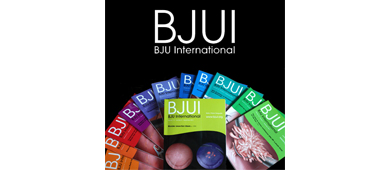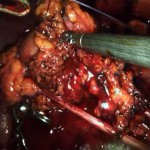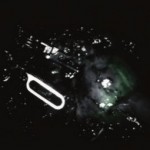Editorial: To clamp or not to clamp in robotic partial nephrectomy?
The article by Komninos et al. [1], in this issue of the BJUI has looked into the importance of warm ischaemia techniques in robot-assisted partial nephrectomy (RAPN) on the deterioration in short- and longer-term renal function. A case series of 162 procedures undertaken by a single surgeon over a 7-year period was analysed. Within this cohort, 114 patients underwent main artery clamping, whilst 23 and 25 patients underwent off-clamp and selective artery clamping methods, respectively.
Segmental artery clamping and off-clamp techniques have been recently developed to minimize the warm ischaemia time (WIT), which, if prolonged, can result in loss of normal functioning parenchyma, potentially causing renal impairment [2]. This paper has correctly identified that many studies on RAPN within the literature have a limited 6-month follow-up regarding postoperative renal function, and the authors sought to evaluate this further. They have shown that significantly less deterioration in renal function over the first 3 months is seen in the off-clamp and selective artery clamp techniques compared with main artery clamping. Importantly, however, this reduction seems transient and was not seen at 6 months and 1 year after surgery.
The authors comment on the median clamping times used in the two separate clamping techniques, with 24.8 and 18 min in the main artery and selective artery clamping groups, respectively; however, no specific analysis was provided of the significance of these times on renal function outcome. Elsewhere Abreu et al. [3], have reported that ‘zero ischaemia time’, with no hilar clamping, preserves renal function with a median decrease of 0 mg/dL in creatinine and a 5 mL/min/1.73 m2 reduction in estimated GFR (eGFR) rate at hospital discharge in a robotic surgery series. Similarly, George et al. [4] have shown that, at 6 months, less renal injury is sustained, as demonstrated by eGFR, when an off-clamp laparoscopic technique was used compared with an on-clamp technique, and that WIT was a significant predictor of decreased eGFR in the postoperative period.
Warm ischaemia time is a topic of much debate in the literature and remains a controversial area of significant interest. As most predictors of eGFR, such as age, comorbidity and pre-existing renal function, are unmodifiable, the attractive challenge with WIT is that it is a surgically modifiable variable. Reassuringly, RAPN clamp time is typically shorter than in pure laparoscopic partial nephrectomy, and usually shorter than the generally accepted limit of 30 min that has been associated with good preservation of postoperative renal function [5]. More recently, Wiener et al. [6] were able to establish that WIT ≤ 22 min prevented a statistically significant decline in renal function at 6–12 months.
In light of this evidence, another technique of ‘early unclamping’ is being increasingly considered, especially in RPN, but several considerations, including increased blood loss and potential increased difficulty with the renorrhaphy, have limited its application [5]. The paper by Komninos et al. is supported by another study that analysed 95 consecutive RAPN cases, in which a variety of clamping techniques was used (artery and vein, artery alone and unclamp), showing that GFR and overall percentage decrease in GFR was similar for all three methods at a median follow-up of 6 months and suggesting that intermediate-term renal function outcome is irrespective of clamping technique [7].
Clearly there are limitations to the present study, including its non-randomized, retrospective nature and the low sample sizes of the off-clamp and selective artery groups and the authors have recognized this. The entire population also had a low body mass index and comorbidity status compared with many RAPN series. The off-clamp tumours were all relatively exophytic, significantly smaller than the other groups (1.7 vs 3.5 and 3.3 cm), and far less complex, with PADUA scores of 7 compared with 10 and 9. Despite this, the study has shown, with a respectable follow-up period, that although there is a significant initial deterioration in renal function with the main artery clamping technique at 3 months compared with the selective artery and off-clamp methods, there was no significant difference in renal deterioration between the three groups at 6 months and at 1 year.
It is also interesting to see that, even though patients in the main artery clamping group had larger and more complex tumours, inevitably resulting in a greater resected volume of normal-functioning nephrons, renal function deterioration was no different from the off-clamp group by 6 months. The authors have contributed to the evidence for main artery clamping in RPN, particularly in complex tumours in healthy younger patients with bilateral functioning renal units. Techniques to minimize warm ischaemia are likely to continue to have a role in higher risk and imperative indications for partial nephrectomy.



